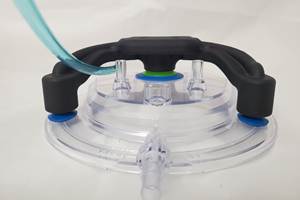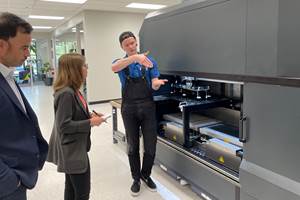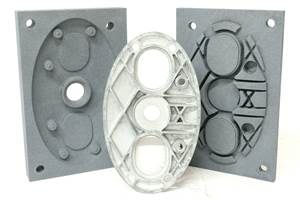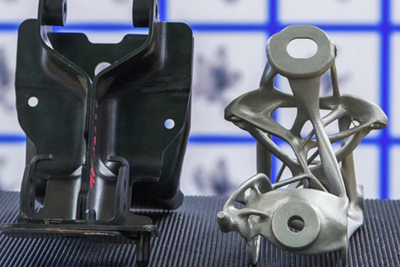The editors of Additive Manufacturing Media launched our podcast, AM Radio, in 2021 as a place to ask big questions about additive manufacturing adoption. Will 3D printing replace castings? What role is AM playing in electric vehicles? Why do so many inventors turn to 3D printing, and how should established manufacturers think about integrating this technology?
We don’t always have the answers, but in every episode, we share what we’ve seen at AM facilities and what we’ve learned from conversations with AM users and suppliers. Over the course of nearly 30 episodes, we’ve covered a lot of ground — but if you’re just discovering the podcast for the first time, our top five most-downloaded episodes are a perfect place to start. Listen right here on this page; you can also check out the full catalog here, or find the show on Spotify, Apple Podcasts, Google Podcasts or the podcast listening app of your choice.

5TH PLACE: Are We Underappreciating Bridge Production? Plus, When to Drink the Kool-Aid
3D printing is valuable as a means of bridge production — that is, manufacturing that is less than scale production, and likely temporary, but nonetheless filling a production need. Sometimes it comes between prototyping and serial production, or to cover a supply chain gap.
Listen for: Examples of manufacturers performing 3D printed bridge production to great advantage, as well as cases where it makes sense to fully embrace AM (and drink the proverbial Kool-Aid) for production instead.

4TH PLACE: Finishing's Role in Additive Manufacturing
A 3D printed part is rarely complete straight off the printer, and many additive manufacturers are accustomed to performing some level of cleaning and surface finishing. But postprocessing need not stop there. Electroplating, powder coating, anodizing and other processes can improve the appearance, provide greater wear resistance and add functionality to 3D printed parts.
Listen for: A guest appearance from Scott Francis, editor-in-chief of sister publication Products Finishing, and a forward-looking discussion of how conventional finishing could advance 3D printing farther into end-use applications.

3RD PLACE: 3D Printing at PTXPO and New Modalities in Polymer
3D printed polymer is increasingly being used for the production of plastic parts, but 3D printed tooling for plastics processing remains a major application for AM as well. In this episode, Julia Hider shares her experience at the inaugural PTXPO event and discusses emerging modalities in polymer 3D printing.
Listen for: Various examples of 3D printed tooling and new methods of 3D printing with polymers that deliver greater freedoms in terms of layer width, layer height, material viscosity and more. Plus, Julia Hider and Pete Zelinski recreate the famous plastics exchange from The Graduate.

2ND PLACE: Do the 7 Families of Additive Manufacturing Technologies Still Make Sense?
Additive manufacturing entails more than 3D printing, but even the term “3D printing” covers a range of meanings. 3D printing might mean extruding plastic, or depositing binder into metal, or melting material with lasers, or any number of other means of fabricating through digital layering. Ten years after the first attempt at creating a taxonomy, it may be time to consider whether the “Seven Families of Additive Manufacturing Technologies” are still relevant.
Listen for: Stephanie Hendrixson and Peter Zelinski try to stump each other with some unusual 3D printing processes and debate how to reorganize today’s additive manufacturing technologies.

1ST PLACE: 10 Years of Additive Manufacturing Media, Plus the Technology's Next Decade
In this retrospective episode, we reflect on the 10-year history of Additive Manufacturing Media and how AM technology has evolved over that same time frame. Then, the conversation turns to the future of 3D printing for production.
Listen for: Peter Zelinski and Stephanie Hendrixson offer 6 predictions about where additive manufacturing is headed over the next 10 years.
Related Content
8 Ways the Plastics Industry Is Using 3D Printing
Plastics processors are finding applications for 3D printing around the plant and across the supply chain. Here are 8 examples.
Read MoreAdditive Manufacturing's Evolving Role at Fathom Now Emphasizing Bridge Production
Bridge production is currently the biggest opportunity for additive manufacturing, says Fathom Manufacturing co-founder Rich Stump. How this service provider leverages AM while finding balance with other production capabilities.
Read MoreBridge Production Is Real Production
Not prototyping — it is something far more than this. The chance to launch the product into the world using additive manufacturing as the initial process delivers important new possibilities, and even keeps on delivering advantages far into the product’s life.
Read MoreFoundry Lab: How Casting in a Day Will Improve the Design of Metal Parts (Includes Video)
The company’s digital casting process uses 3D printing, but the result is a cast part. By providing a casting faster than a foundry, the company says effective prototyping is now possible for cast parts, as well as bridge production.
Read MoreRead Next
Additive Manufacturing Production at Scale Reveals the Technology's Next Challenges: AM Radio #28
Seemingly small issues in 3D printing are becoming larger problems that need solutions as manufacturers advance into ongoing production and higher quantities with AM. Stephanie Hendrixson and Peter Zelinski discuss 6 of these challenges on AM Radio.
Read MoreHow Additive Manufacturing Is Transforming EVs and Transportation: AM Radio #23
As 3D printing is adopted into the electric vehicle (EV) market, it is not just vehicles that are being reshaped. In this episode of the AM Radio podcast, we discuss additive manufacturing and the future of transportation.
Read MoreIs 3D Printing Competing with Casting? AM Radio #27B
On this episode of AM Radio, we discuss two examples of companies that are shortening supply chains by using 3D printing instead of casting.
Read More

.jpg;width=70;height=70;mode=crop)
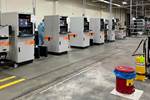
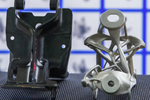





.png;maxWidth=300;quality=90)







